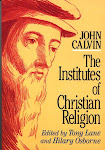 Picture of the man who made dispensationalism popular- J.N. Darby (sweet hair and sideburns)
Picture of the man who made dispensationalism popular- J.N. Darby (sweet hair and sideburns)There will be two posts on dispensationalism. Overall, I want to outline three points regarding DT. First, I will highlight some technical definitions of DT. Next, I will outline some primary elements of DT that distinguish it from both Covenant Theology and New Covenant Theology. And lastly, I will provide a brief dissection (or analysis) of some significant features of DT.
Definitions of Dispensationalism
Let’s begin by looking at some concise definitions of Dispensationalism (DT). The first one is taken from Wayne Grudem who does not hold to DT. Grudem defines DT as:
“A theological system that began in the 19th century with the writings of J.N. Darby. Among the general doctrines of this system are the distinction between Israel and the church as the two groups in God’s overall plan, the pretribulational rapture of the church, a future literal fulfillment of Old Testament prophecies concerning Israel, and the dividing of biblical history into seven periods, or ‘dispensations’, of God’s ways of relating to His people” Grudem, Systematic Theology).
Let’s begin by looking at some concise definitions of Dispensationalism (DT). The first one is taken from Wayne Grudem who does not hold to DT. Grudem defines DT as:
“A theological system that began in the 19th century with the writings of J.N. Darby. Among the general doctrines of this system are the distinction between Israel and the church as the two groups in God’s overall plan, the pretribulational rapture of the church, a future literal fulfillment of Old Testament prophecies concerning Israel, and the dividing of biblical history into seven periods, or ‘dispensations’, of God’s ways of relating to His people” Grudem, Systematic Theology).
Lewis Sperry Chafer who has served as one of DT’s most prominent theologians defines it this way,“The dispensationalist believes that throughout the ages, God is pursuing two distinct purposes: one related to the earth with earthly people and earthly objectives involved, while the other is related to heaven with heavenly people and heavenly objectives involved” (L.S. Chafer).
The last definition will be taken from perhaps the most popular Dispensational theologian of all time who made dispensationalism popular among laymen with his Scofield Reference Study Bible. He captures (very concisely) the major thrust of DT. His name is C.I. Schofield and this is a comment he made concerning dispensationalism, “Comparing, then, what is said in Scripture concerning Israel and the church, we find that in origin, calling, promise, worship, principles of conduct, and future destiny all is in contrast” (C.I. Scofield).
Distinctions of Dispensationalism
Now that we have some working definitions, let us flesh out the major tenets of this particular system of thought. First, it is clear from Grudem’s definition above that DT emphasizes the concept of “dispensations”. Dispensations are simply periods of time that DT adherents organize their whole system around. These periods reveal that God has a history of relating to man differently throughout various stages in redemptive history. Though some DT supporters hold to more or less dispensations than others, most argue for seven dispensations. Each dispensation is marked by a judgmental transition to the next dispensation. In other words, each dispensation ends with God’s judgement in some form or another on man for not responding positively to the privileged position he was placed in by God. The primary texts used to support the concept of dispensations are 2 Timothy 2:15 and Ephesians 3:5-10.
DT typically teaches that the first dispensation is the age of innocence. This beginning age covers ground from the creation of Adam to Adam and Eve’s expulsion from Garden. God’s expulsion of Adam and Eve from the Garden marks the specific judgement in this first age.
The second dispensation is most commonly called the age of conscience. This second age begins with the expulsion from the Garden, and carries through to the flood. This age of conscience ends with God’s judgement of the flood.
The age of human government is viewed as the third dispensation. The end of the flood marks its beginning, and this dispensation ends at the tower of Babel. Of course, the judgement that marks the end of this dispensation is God’s act of dispersing the people by confusing their languages.
The fourth dispensation is called the age of promise. This age originates with God’s covenant with Abraham. It carries through to Israel’s bondage in Egypt. Of course, it ends with God judging Israel by placing them as slaves in Egypt.
The age of law is known as the fifth dispensation. From the forming of theocratic Israel at Mt. Sinai in the giving of the 10 commandments to the Day of Pentecost recorded in Acts 2 marks this period’s beginning and ending points. Obviously, DT says that this dispensation ends with God’s judgement in turning his focus off of Israel to the church (his new people).
The age of grace is identified as the sixth period. It is usually marked from the Day of Pentecost to the judgement of the apostate church and world. It is self-evident, therefore what this period’s specific judgement of God is.
The final period is often categorized as the age of the kingdom. It is marked by the second coming of Christ to the end of a 1,000 year (DT sees this as being literal) reign of Christ over restored Israel and the church. This period ends with the Great White Throne judgement.
Second, it is also clear that the followers of DT choose as their main point of emphasis a very strict separation of Israel and the Church, which logically results in two distinct peoples of God. The leaders of DT argue that God’s purpose for Israel is largely earthly, and has a largely earthly objective (Gen. 12:1; Dt. 8:7-9). On the other hand, they say that God’s purpose for the Church is heavenly, and has a heavenly objective (references used for support of argument: Phil. 3:20-21; Heb. 3:1; I Pet. 1:4). Thus, Israel is understood as being the centerpiece to Christ’s earthly presence (references used for support of argument: Lk. 1:31-33; Jer. 32:37-38). In contrast, the Church is understood as being the centerpiece of Christ’s heavenly presence (references used for support of argument: Jn. 14:2,3; Phil. 3:20-21).
Third, in addition to DT's major point of emphasis in separating ethnic Israel and the church, there exist some secondary elements that should be noticed as it pertains to each dispensation. It is argued that each dispensation contains certain key elements. First, every dispensation, they say, is marked by God’s “test” of man by placing him in a privileged position in relation to God and giving him a unique revelation of his will. It is simply man’s duty to obey God under these divinely appointed circumstances. Second, man’s unilateral failure to obey God’s will perfectly is highlighted in each dispensation. Third, as we have already seen, God closes each dispensation with judgement. And finally, each dispensation functions to reveal man’s guilt of sin before God.
Each of the three systems under discussion possesses a central method of interpreting the Scriptures, which brings us to the fourth major distinction of DT. DT is rooted in its adherent’s self-proclaimed literal interpretation of Scripture. What they mean by this is an allowance for the Old Testament Scriptures to stand on their own apart from the New Testament Scriptures. The result is that they allow the Old Testament Scriptures to interpret the New Testament Scriptures when it comes to prophesy. In other words, logical priority is given to the Old Testament over the New Testament. This explains their major distinctions regarding eschatology (last things) compared with the other two systems of thought to be considered in this series of posts. If one conducts their study of Scripture with this particular brand of interpretation, which demands Old Testament priority over the New Testament Scriptures, then the result is a strong stance regarding God’s promises to national, ethnic Israel. The Dispensationalist's classic argument used to support their interpretive method is based on a statement such as this, “Since Christ’s first coming included the literal fulfillment of prophecy (birth, death, resurrection), then His second coming will include a literal fulfillment of His promises to Israel.” We will not take the time to critique this statement right now, though it must be pointed out that there are many reasons why this statement is misleading and erroneous. At this point suffice it to say that adherents of DT claim that the main thrust of their theological system shows that God’s main purpose in the world is basically twofold: 1) to keep His promises to ethnic Israel, and 2) to save the Church.
The last definition will be taken from perhaps the most popular Dispensational theologian of all time who made dispensationalism popular among laymen with his Scofield Reference Study Bible. He captures (very concisely) the major thrust of DT. His name is C.I. Schofield and this is a comment he made concerning dispensationalism, “Comparing, then, what is said in Scripture concerning Israel and the church, we find that in origin, calling, promise, worship, principles of conduct, and future destiny all is in contrast” (C.I. Scofield).
Distinctions of Dispensationalism
Now that we have some working definitions, let us flesh out the major tenets of this particular system of thought. First, it is clear from Grudem’s definition above that DT emphasizes the concept of “dispensations”. Dispensations are simply periods of time that DT adherents organize their whole system around. These periods reveal that God has a history of relating to man differently throughout various stages in redemptive history. Though some DT supporters hold to more or less dispensations than others, most argue for seven dispensations. Each dispensation is marked by a judgmental transition to the next dispensation. In other words, each dispensation ends with God’s judgement in some form or another on man for not responding positively to the privileged position he was placed in by God. The primary texts used to support the concept of dispensations are 2 Timothy 2:15 and Ephesians 3:5-10.
DT typically teaches that the first dispensation is the age of innocence. This beginning age covers ground from the creation of Adam to Adam and Eve’s expulsion from Garden. God’s expulsion of Adam and Eve from the Garden marks the specific judgement in this first age.
The second dispensation is most commonly called the age of conscience. This second age begins with the expulsion from the Garden, and carries through to the flood. This age of conscience ends with God’s judgement of the flood.
The age of human government is viewed as the third dispensation. The end of the flood marks its beginning, and this dispensation ends at the tower of Babel. Of course, the judgement that marks the end of this dispensation is God’s act of dispersing the people by confusing their languages.
The fourth dispensation is called the age of promise. This age originates with God’s covenant with Abraham. It carries through to Israel’s bondage in Egypt. Of course, it ends with God judging Israel by placing them as slaves in Egypt.
The age of law is known as the fifth dispensation. From the forming of theocratic Israel at Mt. Sinai in the giving of the 10 commandments to the Day of Pentecost recorded in Acts 2 marks this period’s beginning and ending points. Obviously, DT says that this dispensation ends with God’s judgement in turning his focus off of Israel to the church (his new people).
The age of grace is identified as the sixth period. It is usually marked from the Day of Pentecost to the judgement of the apostate church and world. It is self-evident, therefore what this period’s specific judgement of God is.
The final period is often categorized as the age of the kingdom. It is marked by the second coming of Christ to the end of a 1,000 year (DT sees this as being literal) reign of Christ over restored Israel and the church. This period ends with the Great White Throne judgement.
Second, it is also clear that the followers of DT choose as their main point of emphasis a very strict separation of Israel and the Church, which logically results in two distinct peoples of God. The leaders of DT argue that God’s purpose for Israel is largely earthly, and has a largely earthly objective (Gen. 12:1; Dt. 8:7-9). On the other hand, they say that God’s purpose for the Church is heavenly, and has a heavenly objective (references used for support of argument: Phil. 3:20-21; Heb. 3:1; I Pet. 1:4). Thus, Israel is understood as being the centerpiece to Christ’s earthly presence (references used for support of argument: Lk. 1:31-33; Jer. 32:37-38). In contrast, the Church is understood as being the centerpiece of Christ’s heavenly presence (references used for support of argument: Jn. 14:2,3; Phil. 3:20-21).
Third, in addition to DT's major point of emphasis in separating ethnic Israel and the church, there exist some secondary elements that should be noticed as it pertains to each dispensation. It is argued that each dispensation contains certain key elements. First, every dispensation, they say, is marked by God’s “test” of man by placing him in a privileged position in relation to God and giving him a unique revelation of his will. It is simply man’s duty to obey God under these divinely appointed circumstances. Second, man’s unilateral failure to obey God’s will perfectly is highlighted in each dispensation. Third, as we have already seen, God closes each dispensation with judgement. And finally, each dispensation functions to reveal man’s guilt of sin before God.
Each of the three systems under discussion possesses a central method of interpreting the Scriptures, which brings us to the fourth major distinction of DT. DT is rooted in its adherent’s self-proclaimed literal interpretation of Scripture. What they mean by this is an allowance for the Old Testament Scriptures to stand on their own apart from the New Testament Scriptures. The result is that they allow the Old Testament Scriptures to interpret the New Testament Scriptures when it comes to prophesy. In other words, logical priority is given to the Old Testament over the New Testament. This explains their major distinctions regarding eschatology (last things) compared with the other two systems of thought to be considered in this series of posts. If one conducts their study of Scripture with this particular brand of interpretation, which demands Old Testament priority over the New Testament Scriptures, then the result is a strong stance regarding God’s promises to national, ethnic Israel. The Dispensationalist's classic argument used to support their interpretive method is based on a statement such as this, “Since Christ’s first coming included the literal fulfillment of prophecy (birth, death, resurrection), then His second coming will include a literal fulfillment of His promises to Israel.” We will not take the time to critique this statement right now, though it must be pointed out that there are many reasons why this statement is misleading and erroneous. At this point suffice it to say that adherents of DT claim that the main thrust of their theological system shows that God’s main purpose in the world is basically twofold: 1) to keep His promises to ethnic Israel, and 2) to save the Church.
One can determine on their own if this system can be seen as Gospel centered or not. Certainly, it will come down to an issue of degrees when judging which theological system is most Gospel centered. Regardless of one’s conclusion in determining the veracity of DT, it must be asserted that many of the men who have held to this position throughout church history have been godly men who unquestionably love the Gospel. That does not make them right. Indeed, I would argue that dispensationalists (especially of the classic breed) are largely wrong. Furthermore, their theological presuppositions give way to various practical implications as it relates to the church.
(Part 2 will be continued tomorrow) 







Well done and very clear. Thanks!
ReplyDelete~ R.Rao